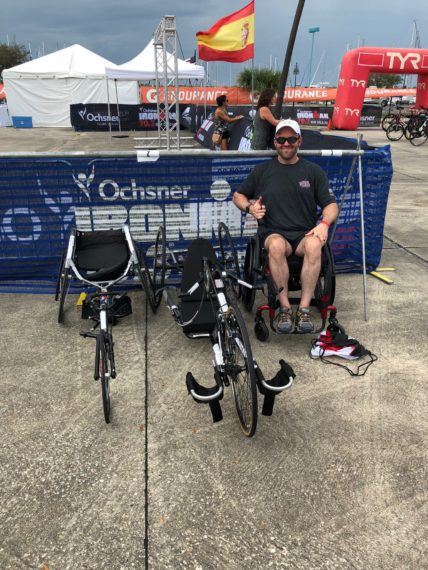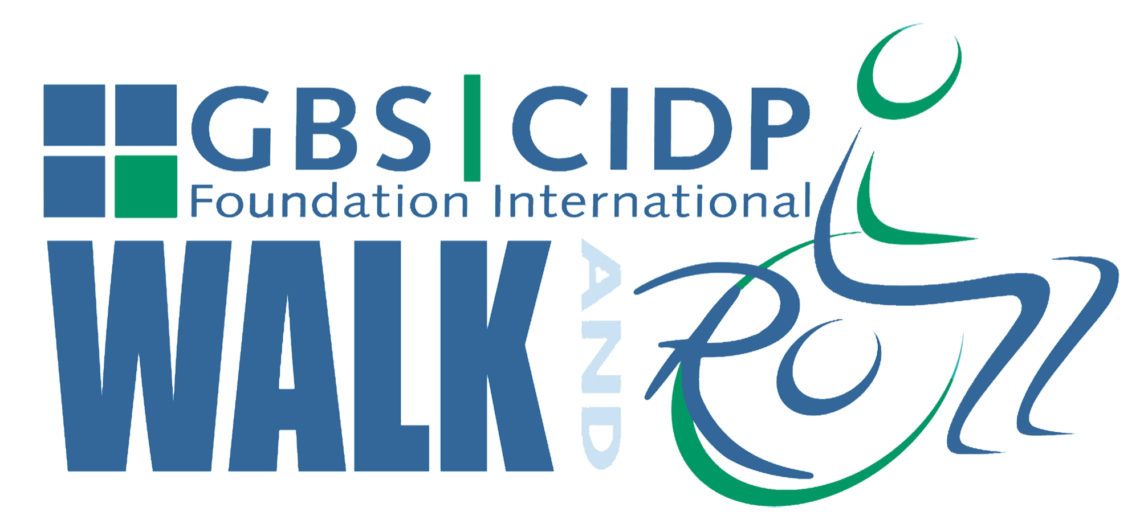Meet CIDP Patient and New Orleans Iron Man, Trent Fielder

Recently we had the privilege to connect with Trent Fielder and learned why and how he continues to challenge himself both physically and mentally, and why he believes,
“We all have the ability to inspire if we live our lives with our spirit first.”
Here’s what he had to say:
When were you diagnosed? 12/16/2011
When & why were you inspired to train for Iron Man?
I was part of a unique rehabilitation program called the Adaptive Training Foundation(www.adaptivetrainingfoundation.org).
I was accepted into their Class 10 in the fall of 2017. The large majority of those who are in the program are wounded veterans. As I came to know them and their courage, one organization also became dear to my heart. #22Kill is an organization dedicated to ending veteran suicide. Every day 22 veterans kill themselves. They have been through so much. It became clear to me what I needed to do and how to bring attention to their suffering. I blurted out that I was going to do an Ironman.
It was a calling from the very beginning. It expanded to more than just 22Kill and became a calling for all who suffer. We, as a country and even beyond the borders, are suffering. We have lost sight of how important it is to help others and share the burden of suffering. We isolate ourselves, as is common, because we think no one can understand. The reality is suffering is universal and so is healing if we will just reach out to each other.
Every day I trained, I prayed for other people. I had an open dialogue with God for hours each day about other people. Veterans that had died, police officers and firemen that I had met whose eyes told a story. I never made a single day about me only others. As a result, I became stronger every day. There was never any fear, only determination to give hope back to people.
What type of training did you do?
It consisted of swimming, hand bike and racing wheelchair. I could not afford any equipment so I was blessed with equipment to borrow and train with.
Swimming was always the hardest for me because, due to the complications I have experienced, I don’t have full lung capacity and irregular breathing causes panic due to the embolisms I had in 2014. I had to find a way to control it so I found an underwater IPOD and headphones through Underwater Audio. This allowed me to use specific songs that gave me cadence to my breathing and motions. I knew when to breathe in or out based on the rhythm. As I became stronger, I could go longer distances, finally reaching and maintaining about 1.4-1.5 miles. The race distance is 1.2 but it is open water so much more difficult.
The handbike was a harder transition because the bike was meant for someone else and I used a device called a Compu-trainer. This device utilized a computer and equipment attached to the bike to simulate different types of races and conditions. Once I was able to do it, I practiced about 3 days a week on it, eventually getting up to 40 miles. Hydration was so crucial and a diet for during the race. I dropped about 25 lbs. and adjusted patterns to keep strength in my shoulders.
The racing chair was also borrowed but I was able to make it work much easier. My strength is in my downward push so I adjusted quickly. the bike is very light so keeping my body forward was necessary otherwise the bike would fall backwards. I wasn’t able to get my hands on it until almost 90 days before the race so there wasn’t much of a learning curve.
When, where was the competition?
October 21 in New Orleans, LA
What was it like to cross the finish line?
I was so focused on trying to make the correct pattern work (since I can’t feel my legs, I had to generate enough vibration so I would have the proprioception. I had practiced this for months but I had more trouble than I expected because I couldn’t fully feel my hips. When I tore my rotator cuffs early on, it became a matter of will but the calling was clear. I heard God’s voice to stand at .2 miles. My team and many others helped me. A police officer who had followed me had driven ahead letting people know I was going to walk so there were a large amount of people.
As I turned the corner, I could hear my kids voices(in the video you can too) so it gave me the courage to do it. The slower I move the less feeling I have in my hips because the vibration is diminished. My handler and new friend who drove down from OK after hearing my story, Adam Bailey, is the one who caught me. The powerful thing I will never forget is I could have gone longer. More miles on the bike, more on the chair which I still believe is due to the focus being on others. My 7 year old twins were right there. My son looked right at me and asked, “Daddy, does this mean you can play soccer with me?”
What are your plans for future competitions?
Many people who have been suffering, even some with GBS, those fighting depression and suicidal thoughts, want to train and race. Some want to race with me but others just want to experience a new perspective on life. The calling is the same but with momentum. The plan is to race in Galveston in April and then again in July for the NYC Paratriathlon Championships. As long as I can find a way to purchase a hand bike that is my size and won’t put such a strain on my spine then I will continue to show people that hope is within by racing and bring others who want to as well. Some veterans are already signing up to race with me in April. We all have the ability to inspire if we live our lives with our spirit first.

